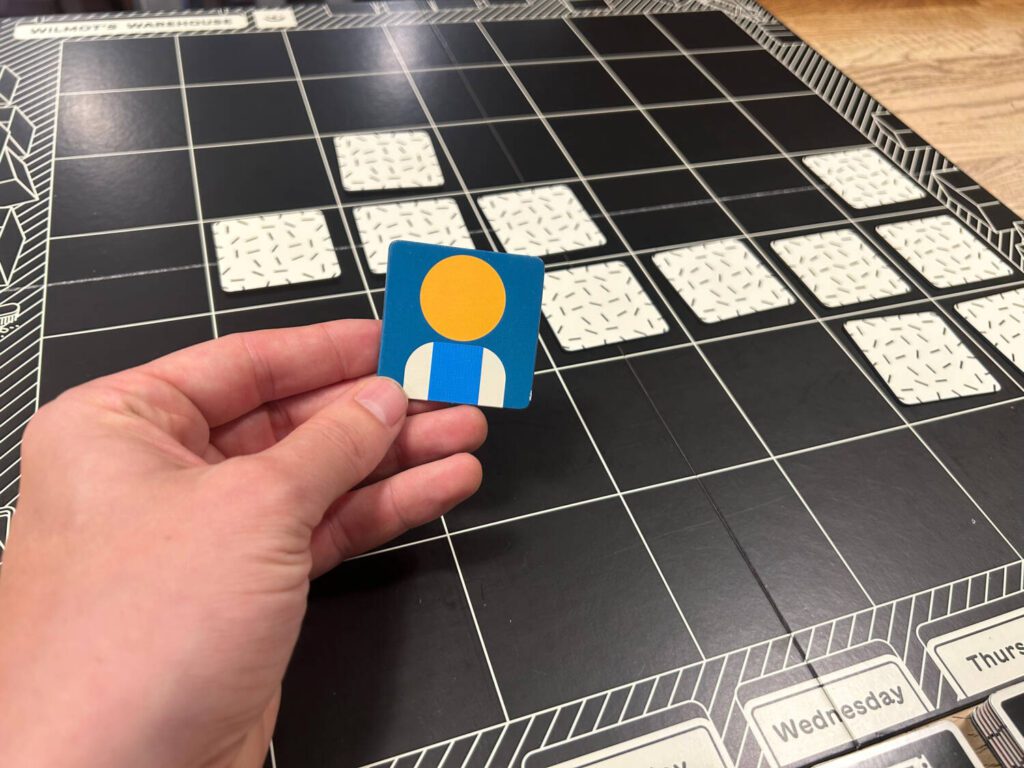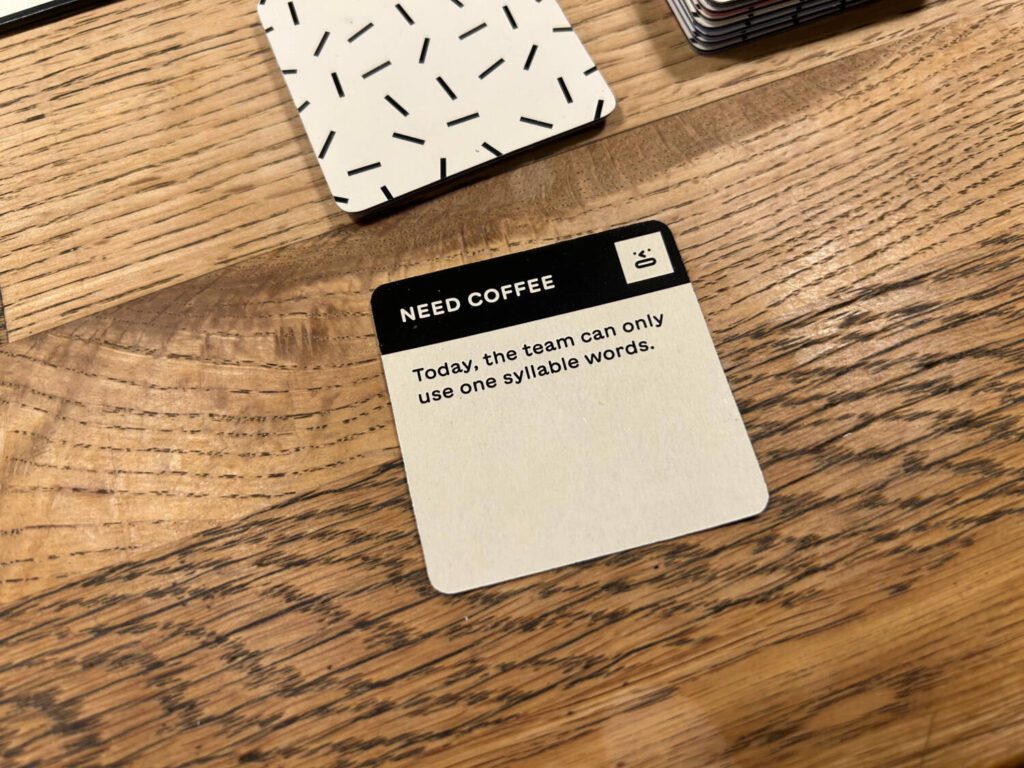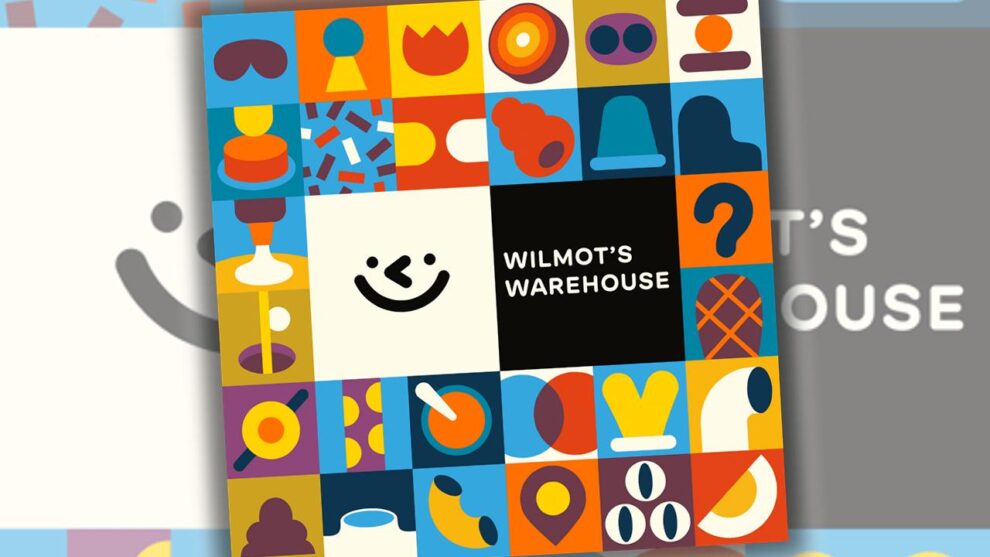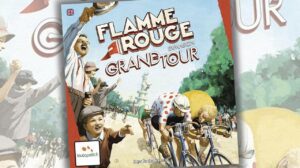Disclosure: Meeple Mountain received a free copy of this product in exchange for an honest, unbiased review. This review is not intended to be an endorsement.
A great game does not require much to be great. I don’t mean they’re easy to design; designing and publishing a great game is basically impossible. What I mean to say is, they don’t require much in the way of rules, or components. CMYK seems to have made the idea a great game does not require much their mission statement. Again and again, the publisher of The Fuzzies, Wavelength, and Lacuna dips into a well that’s light on rules and heavy on experience. Their best games take the most direct route possible, boiling down the idea of a modern board game until you’re left with nothing but the simple syrup.
Consider Wilmot’s Warehouse, their newest release, which has rules so simple that I could teach them to you from scratch in less than a minute. Ricky Haggett, Richard Hogg, and David King have designed a memory game, which I didn’t realize we as a culture still made, and a cooperative one at that. Players take turns adding a total of 35 tiles facedown to a grid, with the ultimate goal of memorizing where all of those tiles are. That’s easier than you might think.

Each tile—Wilmot’s comes with a thick cloth bag jam-packed full of the things—is decorated with an abstract bit of art. It’s your job to decide what that art shows. “This is a blueberry.” “There once was a robot.” “This emo kid was sitting on a bench.” Something like that. Then the player who revealed the tile sets it facedown on the board, often in the middle space.
The next player draws a tile. It shows a spiral. “The blueberry was put in a smoothie.” “The robot spent his days ceaselessly screwing screws into place.” “The emo kid was having a hard time.” That tile is then set adjacent to the first one, in any orthogonal direction you want. Often, the placement helps with remembering. “The blueberry gets dropped in the smoothie, so the smoothie should go below the blueberry.” “The robot was right-handed, of course.” “It makes sense to put his emotions above his head, right?”

Tile by tile, you get a story, one that moves in unexpected directions depending on both the draw and the inclinations of the players. The more creative your group, the wider the possibilities. The story can be silly, sad, funny, or even touching. Wilmot’s Warehouse is a bit of a mirror. Whatever you bring to it, that’s what’s going to get reflected back. It’s mostly funny, but the right group of players in the right state of mind could fashion something genuine and compelling. RPG players would be wondrous here.
Each round after the first introduces a temporary restriction, something to make memorization a little more difficult, to disrupt the process and keep monotony from setting in. It never does. The game flies by, players laughing the entire time, the breathless desperation of forced improvisation carrying you through.

At the end, once all 35 tiles are out on the board, a massive deck is distributed evenly amongst the players, containing proxies of every possible tile. Working together as quickly as possible, under the gun of a timer, you place like on top of like. “Where did we put the antidote for the poison that was accidentally added to the blueberry smoothie?” “I’m trying to remember exactly where the robot’s retirement house ended up being…” “When the emo kid got that haircut, he was on the North Shore, right?” Time penalties are incurred for misidentified tiles and missed tiles, but you likely won’t have to worry about that.
This may seem like an odd thing to say about a memory game, but the memorization portion of Wilmot’s Warehouse is almost beside the point. Getting all of the identification tiles out is easy. That’s the whole point of a memory palace, to make the memories effortless. I think of the last portion as more of a demo, showing you what the techniques at the bottom of this game can do. The beauty of Wilmot’s Warehouse is in the experience, not in the destination. It’s realizing the hundreds of different ways you can interpret something depending on context. It’s the joy of ceaseless “Yes, and”-ing. As is so often the case with CMYK games, Wilmot’s Warehouse is entirely about the people around the table.












